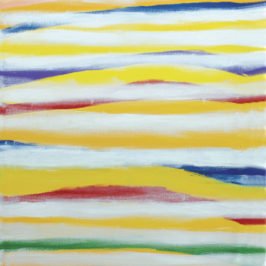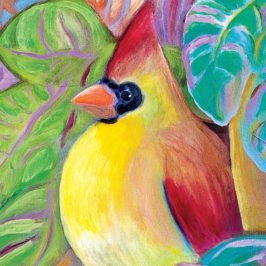
A poem by Washington, DC poet Sarah Yerkes, from her book Days of Blue and Flame, published by Passager Books in 2019. Meet Yerkes in a video interview.
5 minutes
TRANSCRIPT
Sarah Yerkes has lived in Washington, DC since the 1940s. She still lives there. She has a master’s degree in architecture from Harvard and studied sculpture at the Corcoran School of Art.
After a career as a landscape architect and then a sculptor, Yerkes began writing poetry—at age 97. Passager published her first book of poems, Days of Blue and Flame, when she was 101. She’s even older than that now. And still writing poetry.
She said, “I never fully understood how satisfying it could be to shape, build and form a piece with words rather than with wood, aluminum, stone and iron pipe.”
Here’s Sarah Yerkes’ poem “Pygmalion and Galatea.” It clearly reflects her interest in and knowledge of sculpture.
When I was young, the myth of Pygmalion pounding away,
searching for his love, was true romance.
For years and years he had imagined her,
first girlish, then, as he became mature,
she, too, developed. Now an adult sculptor,
he visualized her in full Venusian splendor.
At last, he thought, he had found a way
to express the yearning that was with him night and day.
First off, her lovely hair appeared,
her curls were marble—cold. “How weird,”
he cried, forgetting she would be of stone,
and not of lovely, longing flesh and bone.
Her arms were puzzling: were they at her side?
(He neglected to leave stone for overhead.)
No, they would be reaching forward, waiting.
Her breasts were not a problem. He knew
exactly how they should be—full but not yet pendulous,
the nipples large, voluptuous. The lower torso
somewhat curved (should there be signs of having children?
how absurd!) Legs and feet well formed, efficient:
she would become a famous runner.
Months went by, until, at last, there stood the statue.
He named her Galatea and he loved her.
When I was young, Venus took pity, used some charms,
gave the statue the gift of human life.
The lovers fell into each other’s arms
and lived happily all their days as man and wife.
Now that I am older, I’ve begun to wonder—
did she like her freedom and having her own head?
Pygmalion was insatiable, completely uninhibited;
she was used to peace and calm, in her marble bed.
My curiosity led to research,
not many hours searching in the stack
but right here on my desktop computer.
I found two ladies almost back to back!
Genevieve Galatea Taggert wants
“the passive changelessness” that she had known,
forgetting the “shuddering interlude”
to “stun you with the quiet gaze of stone.”
Claribel Galatea Alegria, too,
disliked being his invention,
the mirror where he preened himself,
made her despise him—a curious convention.
Sarah Yerkes (me) has come more to see
the importance of perspicacity—
in making sure that what one wishes for
is really what comes walking through the door.
“Pygmalion and Galatea” by Sarah Yerkes.
Sarah’s poetry teacher, Bonnie Naradzay, said this about her work: “In her wide-ranging poetry, which looks outward but also inward, Sarah has found a space, beyond the possibilities of three-dimensional art, to investigate and express feelings close to her heart, at times with restraint, always questioning, and always striving to gaze with absolute clarity.”
After an article about Sarah appeared in The Washington Post, someone wrote in and said, “My goodness! What does this woman eat for breakfast!”
. . .
To buy Sarah Yerkes’ book Days of Blue and Flame or learn more about Passager and its commitment to writers over 50, go to passagerbooks.com.
This audio-cast was made possible in part by a grant from the Maryland State Arts Council.






